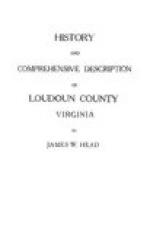On the Blue Ridge and Short Hills the De Kalb stony loam covers the whole of the mountains, and here the physiography consists of long, sharp, rock-crested ridges, with steep, rugged slopes and occasional cliffs and huge ledges. There are occasional benches on the mountain sides, and here there is an accumulation of two or three inches of a black mold, resting on the broken sandstone fragments, and covered with a growth of locust, oak, and berry vines.
Owing to the steep and rugged surface of this soil, together with its stony character, superficial drainage is rapid and thorough, the water rushing in torrents from the mountain slopes, while as a result of the loose texture and the large number of stone fragments in the soil the water passes rapidly through it, and there is never an excess of moisture in the soil or subsoil.
On account of the steep and stony nature of the De Kalb stony loam little of the type can possibly be cultivated. The soil is naturally a very thin one, and is not capable of producing fair yields except in its less stony phases.
The principal growth on the type is chestnut, oak, and some pine. Probably 95 per cent of the type is uncultivated, and is valuable only for the timber growth it supports. Where cultivated the average yields per acre are as follows: Corn, from 10 to 20 bushels; wheat, from 6 to 10 bushels. Apples and especially peaches do fairly well on the mountain phase where not too stony.
The greater part of the De Kalb stony loam is not adapted to agricultural purposes at all, and it is not likely that the land will ever be valuable except for forestry. It is locally termed “mountain land,” and is the poorest agricultural soil of the County.
Porters Clay.
The Porters clay consists of from 6 to 12 inches of a brown or reddish-brown loam, underlain by a heavy red loam or clay loam. The type consists of fairly rough mountain land, and is very stony, having from 15 to 60 percent of small and large schist fragments on the surface, some of which are several feet in diameter. The soil is light and easy to work wherever it is not so stony as to interfere with cultivation.
This soil is a strictly mountain type and not of great extent. It follows the crest and part of the east slope of the Blue Ridge Mountains for several miles, extending in a northeasterly direction and ending at the areas of sandstone formation.
The type is well drained throughout, while the texture of the subsoil is sufficiently heavy to retain considerable moisture through quite extended dry spells. The steeper slopes are uncultivated, and hence are not subject to erosion.




